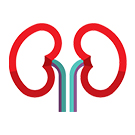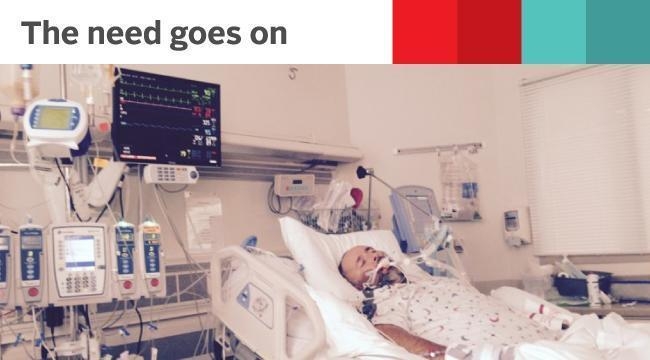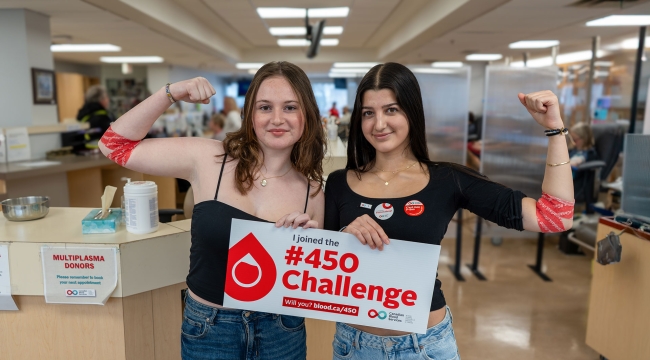When Lucy met Claire: A kidney donation story
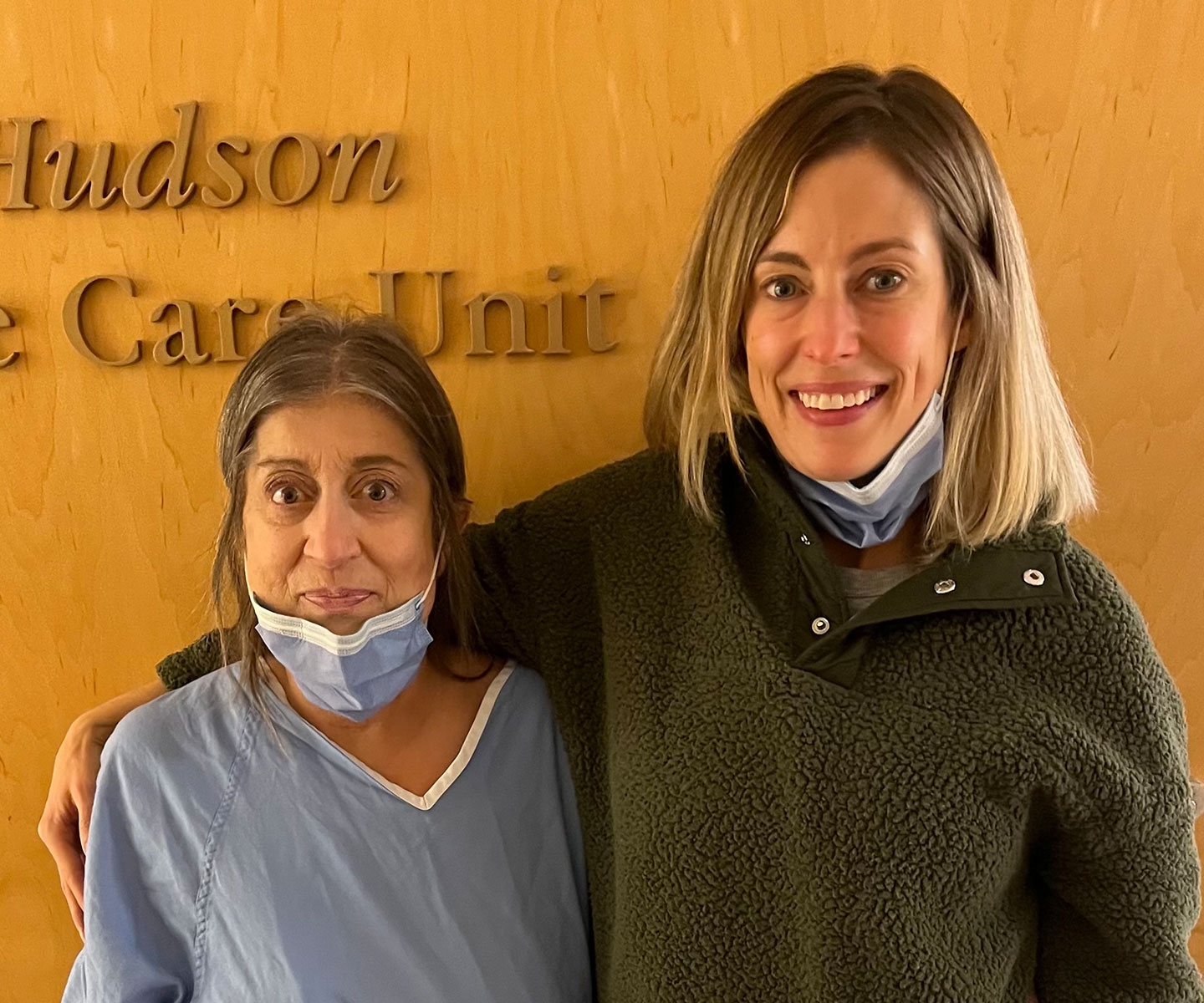
A lucky encounter on social media led a patient in need to the living organ donor who saved her life
Lucy Latino feels as if she’s met an angel.
It happened in a hospital hallway. Lucy, dressed in a blue hospital gown and facemask, was buzzing with the anticipation of her upcoming transplant. A door opened, and there she was.
“It's just an amazing feeling to know that you have this hero standing in front of you that's about to give you a second chance at life,” Lucy says. “I actually call her my angel. That's what I really call her.”
Lucy’s angel may not have wings or a halo, but she does have a name — Claire Yuricek.
“I remember touching her face and going, you're real,” Lucy says. “It's almost like you're looking at a miracle about to happen. There's an instant connection, even though you don't know this person.”
The miracle that Claire was going to perform was a kidney donation that would save Lucy’s life.
Lucy met her kidney donor, Claire, hours before her lifesaving transplant. Watch their story & learn why we’re asking you to change someone’s life by registering to become an organ donor this National Organ & Tissue Donation Awareness Week. Full story: https://t.co/BCw9RJvxmj pic.twitter.com/5KDbNwSPbU
— Canadian Blood Services (@CanadasLifeline) April 25, 2024
The search for a living kidney donor, from sandwich boards to social networks
In 2007, Lucy was diagnosed with focal segmental glomerulosclerosis, a rare kidney disease that can eventually lead to kidney failure. It came as a shock, but she made every effort to manage the disease as recommended — with medication, a nutritious diet and a healthy lifestyle. Still, in 2020, the dreaded news came: her kidneys were failing.
The most effective remedy for kidney failure is a kidney transplant. However, the wait for an organ from a matching deceased donor can be years long. The only other option is a living donor. But without a suitable match in her own family, Lucy’s future was uncertain.
As the wait began, Lucy started undergoing regular dialysis, a process to remove the toxins and waste that her kidneys could no longer filter out. The process took four hours each time, and she had to go through it three days a week.
“I just laid there and hoped every day,” Lucy said. “I knew there were other people out there helping me to stay hopeful.”
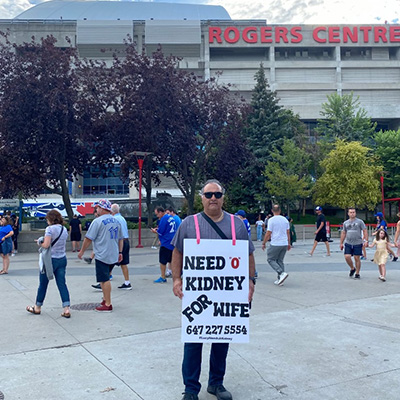
One of those people was Lucy’s husband, Charlie. In an effort to help find her a living donor, he walked all over downtown Toronto wearing a sandwich board emblazoned with “need kidney for wife.” Her grandchildren put up handmade signs in their community. Then there was Dannielle, Charlie and Lucy’s daughter, who used social media to appeal to potential donors.
“My daughter Dannielle started the ‘Lucy Needs a Kidney’ page,” Lucy says. “From the beginning, she was on there trying to find information, and she made a lot of connections through that.”
Dannielle desperately wanted to find a kidney donor for her mom. She wasn’t a match herself, and she wasn’t able to donate blood — which Lucy sometimes needed due to her condition — because she is anemic. Instead, she volunteered at her local blood donor centre, and publicly thanked blood donors online. Using her ‘Lucy Needs a Kidney’ accounts, she would post a ‘cheer’ when she saw people posting about donating blood.
One of those cheers changed Lucy’s life.
From donating blood to donating a kidney
When Claire was 18, and home for the holidays during her first year of university, her brother invited her to come with him to donate blood. She was initially reluctant, but he proved convincing, so they went to donate together.
And she didn’t stop there. She went on to book appointments at blood donation events on her university campus. Then after graduation, she got involved in a corporate blood donation challenge.
“I felt it was something that could help a lot of people,” Claire says. “You can save lives, and it's really a minor inconvenience. It's maybe an hour out of my day every few months, and I can make a big difference doing it.”
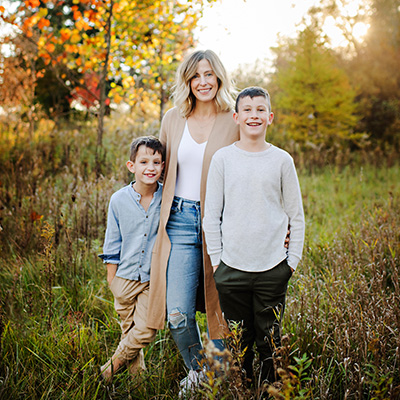
Decades later, in 2022, Claire hit 56 donations and did what she always did after donating: posted on Instagram to encourage others to donate as well. Not long after, she noticed that someone had sent her a ‘cheer’ emoji.
That someone was Dannielle, via the ‘Lucy Needs a Kidney’ account.
“Based on her Instagram account name, it's pretty obvious what the purpose of the account was,” Claire says. “Lucy is close to my mom's age, and I thought, ‘Wow, if that was my mom and our family in this situation, I would want someone to step forward for us.”
On that ‘Lucy Needs a Kidney’ account, Dannielle had described her mother’s struggle with kidney failure and their efforts to find her a donor. She’d also posted information about the donation process for living kidney donors. Like her own brother’s encouragement to donate blood years earlier, Claire found it convincing.
“It sounds silly, but to me, I didn't see a big jump between donating blood and donating a kidney,” Claire says. “That theme of ‘It's something that I can do’ carries through.”
She responded to Dannielle, saying that her blood type was O-positive, and that she would fill out the form to see if she was a match for Lucy.
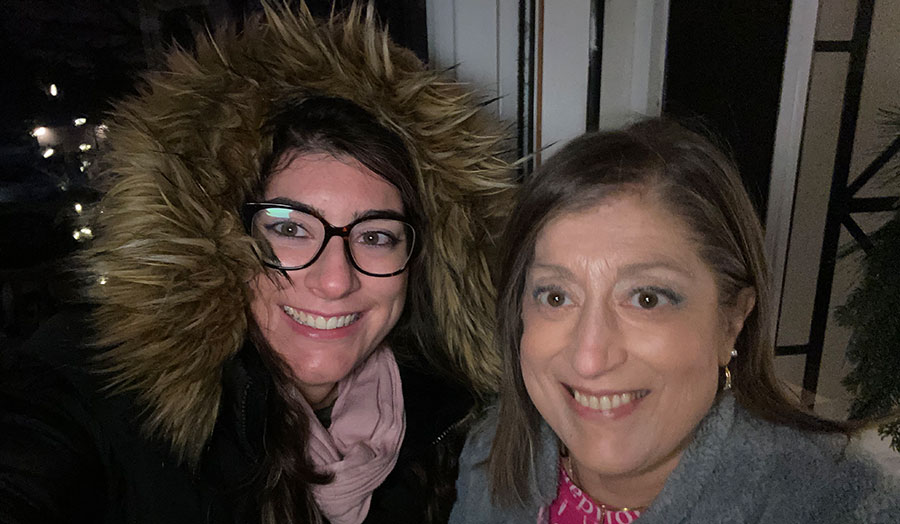
“When I first heard about Claire being tested, it was an amazing feeling,” Lucy says. “I just knew in my heart that for some reason, this woman was going to be the one.”
She was right. Claire was a match. But confirming her as the donor would require a few more steps.
Countdown to kidney donation day
Before Claire could actually donate, doctors had to be confident that the procedure would be safe for her, and also that the donated kidney would function well in Lucy. The wait was emotionally intense.
“I was grateful, I was hopeful, but I was scared at the same time,” Lucy says. “There's always that little thing in the back of your head going, oh well, maybe it won't be the one, and how am I going to cope? But staying hopeful and positive and getting support from my family really did help a lot.”
Fortunately, Claire was confirmed as the donor. From then, she kept in touch with Lucy and her family, but they didn’t actually meet until the day of the donation.
On that day, Claire arrived at the hospital bright and early. Then, as she was waiting to get prepped for surgery, one of the hospital employees told her there was someone there to see her.
“I anticipated that it would be Dannielle, just kind of wishing me luck for the day. I didn't realize that Lucy had come down from her room to meet me,” Claire says. “She had said something to the effect of, ‘a lot of people think their angels are up in heaven and mine is here on earth.’”
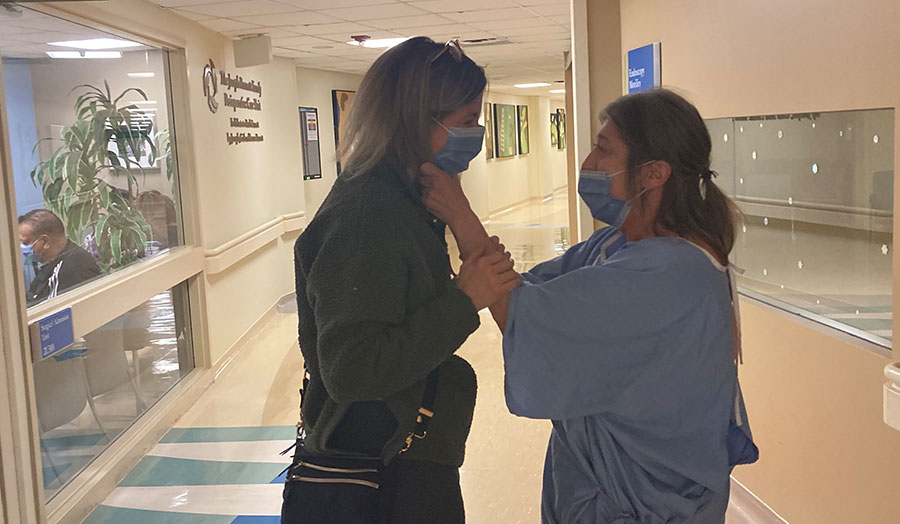
Life after the kidney donation
After the surgery, Claire’s vital signs looked good and she felt great. After two nights in the hospital, she was able to go home to relax and recover.
“I was never really in pain. It was just more discomfort from time to time,” Claire says. “I’d say at two weeks out, I felt about 80 per cent back to normal. And then within four weeks, I was able to do all the things that I typically did.”
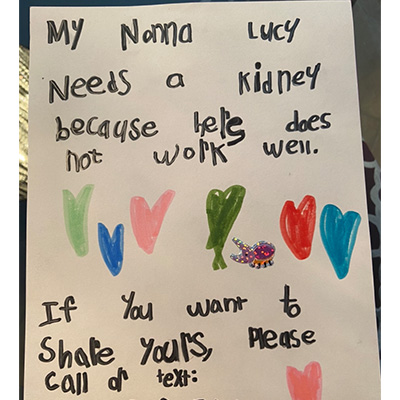
As for Lucy, she got her life back. After missing out on things she loved because of her condition and the challenges of dialysis, there was so much she wanted to do.
“I started going to the gym. I started seeing my grandkids. I go for walks. I go outside and sit,” Lucy says. “I can't wait to get together with Claire and her kids and her family. She is a part of our family now.”
Having gone through this experience, Lucy, Dannielle and Claire are now strong advocates for organ donation.
“I would say this has been the most rewarding experience of my life in a way that I didn't anticipate,” Claire says. “I approached it as, ‘Oh, I'm doing something to help their family,’ and I didn't really understand the magnitude of what the donation would mean. It's something I wish everybody could experience.”
Inspired to learn more about living organ donation? Visit our living donation page, and consider registering to donate organs and tissues after death as well.
